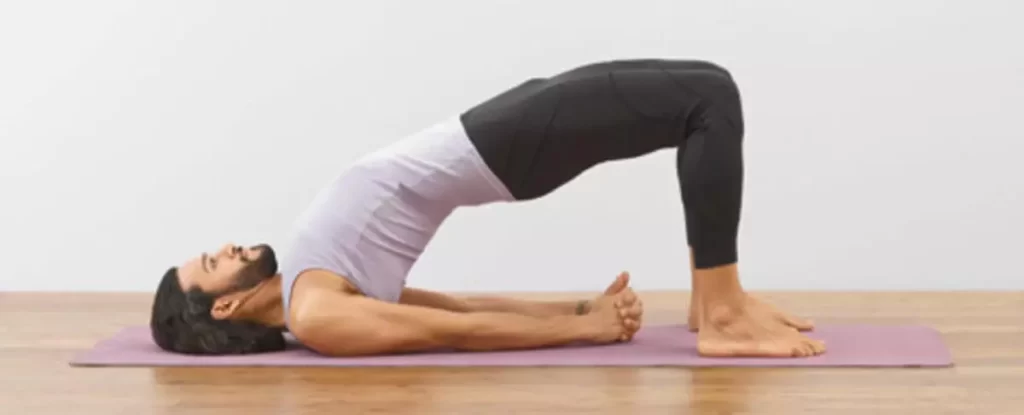
Lower back pain is a common issue that affects millions of people worldwide. Whether it’s caused by poor posture, muscle strain, or underlying conditions, finding effective exercises to alleviate and prevent lower back pain is crucial for maintaining a healthy lifestyle. In this blog post, we will explore some of the best exercises that can help relieve discomfort, strengthen your core, and improve your overall spinal health. So, let’s dive in!
Introduction: Understanding Lower Back Pain
Contents

Before we delve into the exercises, it’s essential to understand the causes and implications of lower back pain. The lower back, also known as the lumbar region, is a complex structure of muscles, ligaments, discs, and vertebrae. When any of these components become injured or strained, it can result in pain and limited mobility.
1. Stretching: Cat-Camel Pose
Stretching exercises can help alleviate tension and improve flexibility in the lower back. One beneficial stretch is the Cat-Camel pose. Start by positioning yourself on all fours, ensuring your hands are directly beneath your shoulders and your knees under your hips. Arch your back upwards, like a cat stretching, and then gently release it into a concave position like a camel. Repeat this movement for several rounds, focusing on the stretch and release of your lower back muscles.
2. Strengthening: 2Bird Dog Exercise
Strengthening the muscles in your core and lower back can provide stability and support to prevent future pain. The Bird Dog exercise is an effective way to engage these muscles. Begin by getting on all fours, maintaining a neutral spine. Extend your right arm forward while simultaneously extending your left leg backward. Hold this position briefly, then return to the starting position and switch sides. Repeat this exercise for several repetitions on each side.
3. Stability: Bridge Pose

Improving core stability is crucial for reducing lower back pain. The Bridge pose targets the glutes and lower back muscles, enhancing their strength and stability. Lie on your back with your knees bent and feet flat on the ground. Slowly raise your hips, creating a straight line from your knees to your shoulders. Hold this position for a few seconds, then lower your hips back down. Repeat this movement for several repetitions, focusing on engaging your glutes and core muscles.
4. Flexibility: Child’s Pose
Flexibility is essential for relieving tension in the lower back. The Child’s Pose is a relaxing stretch that targets the entire back, promoting flexibility and relaxation. Start by kneeling on the floor, sitting back on your heels. Slowly lower your upper body forward, extending your arms in front of you. Rest your forehead on the ground and hold this position for several breaths. Feel the gentle stretch in your lower back as you relax into the pose.
5. Low-Impact: Swimming

Engaging in low-impact exercises is ideal for individuals with lower back pain. Swimming is a fantastic option as it provides a full-body workout without putting excessive strain on your back. The water’s buoyancy reduces the impact on your joints, allowing for increased mobility and flexibility. Whether it’s swimming laps or participating in water aerobics, incorporating swimming into your routine can greatly benefit your lower back health.
Conclusion
Incorporating regular exercise into your routine can significantly contribute to the relief and prevention of lower back pain. By following a balanced exercise program that includes stretching, strengthening, stability, flexibility, and low-impact exercises, you can alleviate discomfort, improve core strength, and enhance your overall spinal health. Remember, consistency and proper form are key to achieving optimal results. Stay active, stay healthy, and say goodbye to lower back pain!
u003cstrongu003eHow often should I perform these exercises?u003c/strongu003e
It’s recommended to perform these exercises at least three times a week for optimal results. However, listen to your body and adjust the frequency based on your comfort level and any pre-existing conditions.
u003cstrongu003eCan I do these exercises if I have a pre-existing back condition?u003c/strongu003e
If you have a pre-existing back condition, it’s crucial to consult with your healthcare provider or a qualified physiotherapist before starting any exercise program. They can provide personalized recommendations based on your specific needs.
u003cstrongu003eAre these exercises suitable for beginners?u003c/strongu003e
Yes, these exercises are beginner-friendly. However, if you’re new to exercise or have any concerns, it’s advisable to seek guidance from a certified fitness professional to ensure proper form and technique.
u003cstrongu003eCan these exercises completely eliminate lower back pain?u003c/strongu003e
While these exercises can help alleviate and prevent lower back pain, individual results may vary. It’s important to maintain a holistic approach to your health, which includes regular exercise, proper posture, and overall lifestyle modifications.
u003cstrongu003eIs it necessary to warm up before doing these exercises?u003c/strongu003e
Yes, warming up before any exercise is essential to prepare your muscles and joints for movement. Prioritize a brief warm-up consisting of light cardiovascular activity, such as brisk walking or cycling, followed by some dynamic stretching.

Carl Clay is a health blog author who has been writing about nutrition, fitness and healthy living for over 10 years. He also loves to run, hike and bike with her wife.












